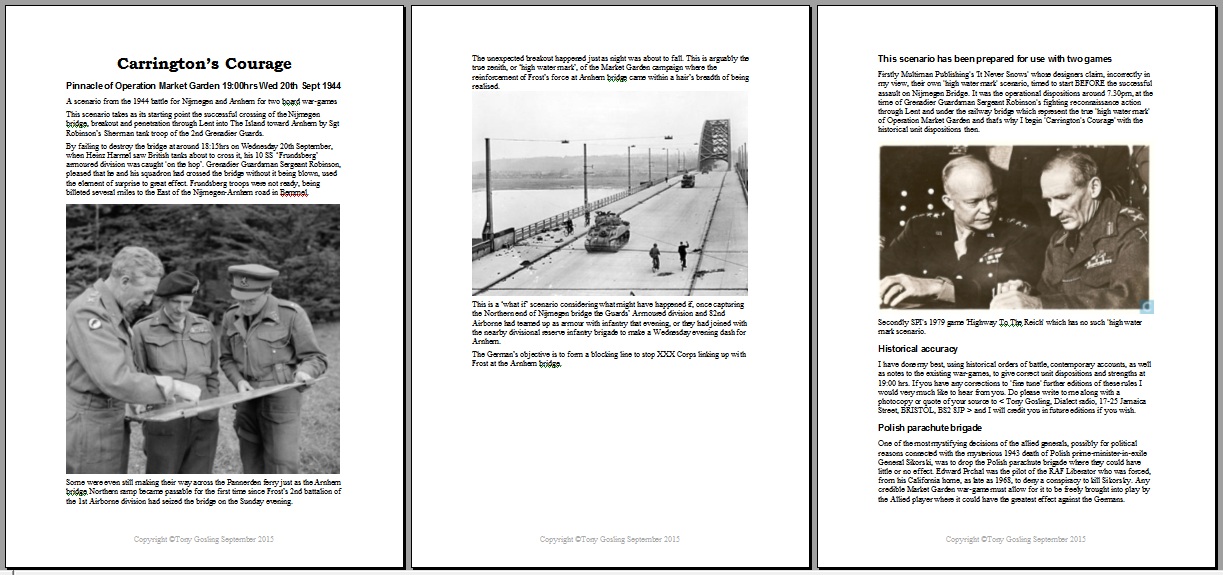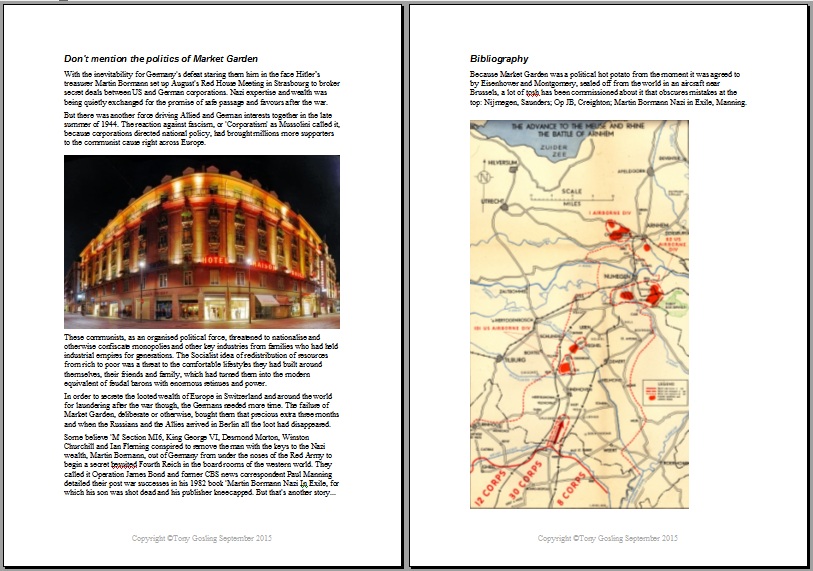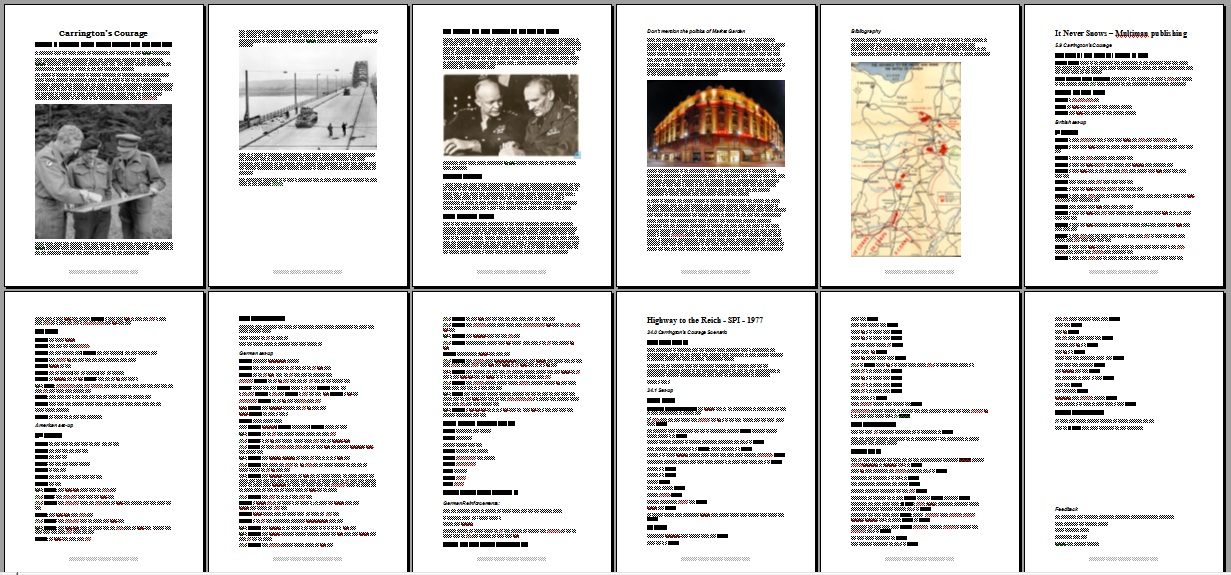
A scenario from the 1944 battle for Nijmegen and Arnhem, for use with two historical board war-games.
This scenario takes as its starting point the successful crossing of the Nijmegen bridge, breakout and penetration through Lent into The Island toward Arnhem by Sgt Robinson’s Sherman tank troop of the 2nd Grenadier Guards.

By failing to destroy the bridge at around 18:15hrs on Wednesday 20th September, when Heinz Harmel saw British tanks about to cross it, his 10 SS ‘Frundsberg’ armoured division was caught 'on the hop’. Grenadier Guardsman Sergeant Robinson, pleased that he and his squadron had crossed the bridge without it being blown, used the element of surprise to great effect. Frundsberg troops were not ready, being billeted several miles to the East of the Nijmegen-Arnhem road in Bemmel.
Some were even still making their way across the Pannerden ferry just as the Arnhem bridge Northern ramp became passable for the first time since Frost’s 2nd battalion of the 1st Airborne division had seized the bridge on the Sunday evening.
The unexpected breakout happened just as night was about to fall. This is arguably the true zenith, or ‘high water mark’, of the Market Garden campaign where the reinforcement of Frost’s force at Arnhem bridge came within a hair’s breadth of being realised.
This is a ‘what if’ scenario considering what might have happened if, once capturing the Northern end of Nijmegen bridge the Guards’ Armoured division and 82nd Airborne had teamed up as armour with infantry that evening, or they had joined with the nearby divisional reserve infantry brigade to make a Wednesday evening dash for Arnhem.
The German’s objective is to form a blocking line to stop XXX Corps linking up with Frost at the Arnhem bridge.

Firstly Multiman Publishing's 'It Never Snows' whose designers claim, incorrectly in my view, their own 'high water mark' scenario, timed to start BEFORE the successful assault on Nijmegen Bridge. It was the operational dispositions around 7.00pm, at the time of Grenadier Guardsman Sergeant Robinson's fighting reconnaissance action through Lent and under the railway bridge which represent the true 'high water mark' of Operation Market Garden and that's why I begin 'Carrington's Courage' with the historical unit dispositions then.
Secondly SPI & Decision Games' 'Highway To The Reich', which has no such 'high water mark scenario.
I have done my best, using historical orders of battle, contemporary accounts, as well as notes to the existing war-games, to give correct unit dispositions and strengths at 19:00 hrs. If you have any corrections to 'fine tune' further editions of these rules I would very much like to hear from you. Do please write to me along with a photocopy or quote of your source to < Tony Gosling, Dialect Radio, 17-25 Jamaica Street, BRISTOL, BS2 8JP > and I will credit you in future editions if you wish.
One of the most mystifying decisions of the allied generals, possibly for political reasons connected with the mysterious 1943 death of Polish prime-minister-in-exile General Sikorski, was to drop the Polish parachute brigade where they could have little or no effect. Edward Prchal was the pilot of the RAF Liberator who was forced, from his California home, as late as 1968, to deny a conspiracy to kill Sikorsky. Any credible Market Garden war-game must allow for it to be freely brought into play by the Allied player where it could have the greatest effect against the Germans.
Cheques/Postal orders payable to Tony Gosling, Dialect Radio, 17-25 Jamaica Street, BRISTOL, BS2 8JP
